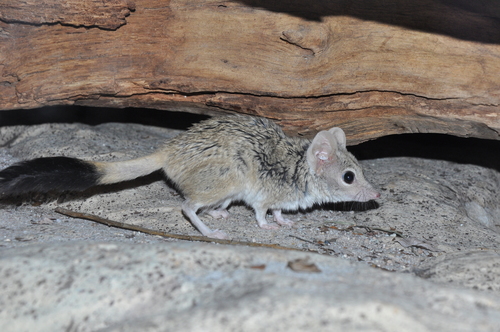
Kowari
The elusive Kowari, or Dasyuroides byrnei, thrives in Australia's dry heartland. With its tufted tail and night-hunting prowess, this marsupial predator plays a critical role in controlling insect populations, showcasing adaptability amidst arid landscapes.
1-2 years
Lifespan
68.04 g
Weight
Length: 13 - 18 cm
Size
Brown, Grey
Color
Medium
Aggression
Vulnerable
Conservation Status
Decreasing
Population Trend
Characteristics
Dasyuroides byrnei, commonly known as the Kowari, is a small carnivorous marsupial native to the arid regions of central Australia. It is characterized by its bushy tail, large eyes, and sharp claws, adapted for hunting. The Kowari exhibits nocturnal behavior, preying on insects and small vertebrates.
Distribution Range of the Kowari
Dasyuroides byrnei, commonly known as the Kowari, is native to the arid and semi-arid regions of central Australia. This includes parts of the Simpson Desert and surrounding areas within the states of South Australia and Queensland.
Kowari's Habitat
Environmental Conditions
The Kowari inhabits desert and semi-desert environments characterized by sandy plains, stony gibber deserts, and areas with sparse vegetation. The climate in these regions is typically harsh, with infrequent rainfall, high temperatures, and extreme temperature variations between day and night.
Ecological Niche
The Kowari is a nocturnal and terrestrial carnivorous marsupial. It occupies ecological niches where it can prey on insects, small mammals, and reptiles. The species is adapted to survive in environments with limited water resources, obtaining moisture primarily from its prey. The Kowari's ecological role involves controlling populations of small prey and contributing to the biodiversity of its arid habitat.
Copyright @ Nature Style Limited. All Rights Reserved.
 English
English